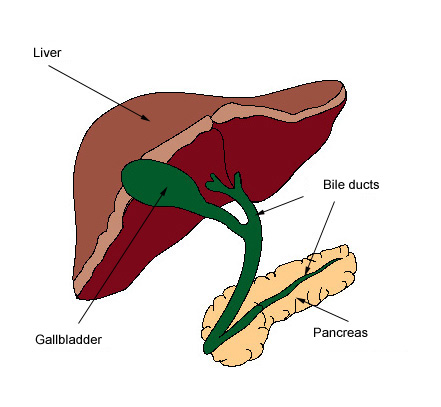Bile is liquid full of digestive enzymes, which is stored in the gallbladder till food is eaten. It is produced in the liver and contains bilirubin, cholesterol, bile acids and other salts. Once food is consumed, the bile is secreted from the gall bladder via bile duct in the small intestine. Bile ducts are also known as drainage pipes which carry bile from liver to gall bladder and then to the small intestine. Many diseases can cause a blocked bile duct and hence the symptoms of these diseases are similar.
What Is Bile Duct Obstruction?
 Bile is the greenish yellow fluid secreted by the liver which helps in digestion and absorption of fats. When the bile duct is blocked due to any reason, it is referred to as bile duct obstruction. In the United States alone, it affects almost 5 out of 1000 people and is fairly common. Bile duct obstruction can be treated with success; however, when it is left untreated for long time, it can cause life-threatening diseases.
Bile is the greenish yellow fluid secreted by the liver which helps in digestion and absorption of fats. When the bile duct is blocked due to any reason, it is referred to as bile duct obstruction. In the United States alone, it affects almost 5 out of 1000 people and is fairly common. Bile duct obstruction can be treated with success; however, when it is left untreated for long time, it can cause life-threatening diseases.
Bile duct obstruction can affect the intra-hepatic and extra-hepatic ducts of the liver. The intra-hepatic ducts are smaller and they carry bile to the extra-hepatic ducts, which in turn form the common hepatic duct that goes to the small intestine. The biliary duct which starts from the gall bladder opens in the common hepatic duct. The common bile duct passes from the pancreas before emptying in the small intestine.
What Are the Symptoms of Bile Duct Obstruction?
The symptoms of bile duct obstruction can be severe when the entire bile duct is obstructed suddenly or when there is inflammation of the bile duct for a long time. The symptoms are caused by the accumulation of bile in the body and are also due to the unavailability of bile for digestion. The symptoms are:
- Jaundice (yellowing of skin and eyes) due to accumulation of bilirubin in the blood
- Itching on various body parts aggravated during night or in warm weather
- Reduced appetite, fatigue and weight loss
- Light brown urine, greasy and clay colored stools
- Pain under the rib cage on the right side
- Fever and night sweats
When to See a Doctor
The doctor should be informed when symptoms like jaundice, changes in urine or stools are found. It is better to get advice from the doctor in case of fever and abdominal pain.
What Are the Causes of Bile Duct Obstruction?
The various causes of bile duct obstruction are given below:
- Cysts formed in the common bile duct
- Gallstones
- Bile duct inflammation
- Scarred bile duct which causes narrowing
- Injury in bile duct caused by gall bladder surgery
- Tumor in the bile duct, pancreas and biliary system
- Worms in the liver and bile ducts
- Infection in people with weak immune system
Risk Factors
The risk of developing bile duct obstruction can increase in the following conditions:
- Chronic pancreatitis
- Pancreatic cancer
- History of gall stones
- Biliary cancer
- Injury to abdominal region
What Are the Treatments for Bile Duct Obstruction?
The first line of action during treating bile duct obstruction is to remove the blockage. If the blockage is caused due to presence of stones, they can be removed via endoscope in a procedure called ERCP. Surgery might also be required to remove the stones. Sometimes the entire gall bladder is removed.
Antibiotics are given when there is an infection. Blockage caused due to cancer is corrected by widening the duct with a procedure called endoscopic or percutaneous dilation.
Lifestyle Changes
Obesity, rapid weight loss and high caloric intake is also associated with formation of gall stones and bile duct obstruction. For this reason the following methods should be tried:
- Reducing intake of saturated fats
- Increasing fiber intake
- Reducing intake of refined sugar
Exercising regularly also helps in reducing the risk of gallstones and the complications associated with it.
Watch the video below to have a quick view on bile duct obstruction:
